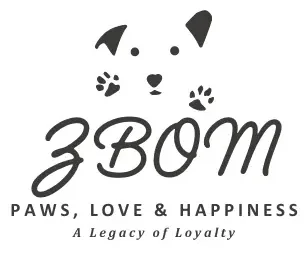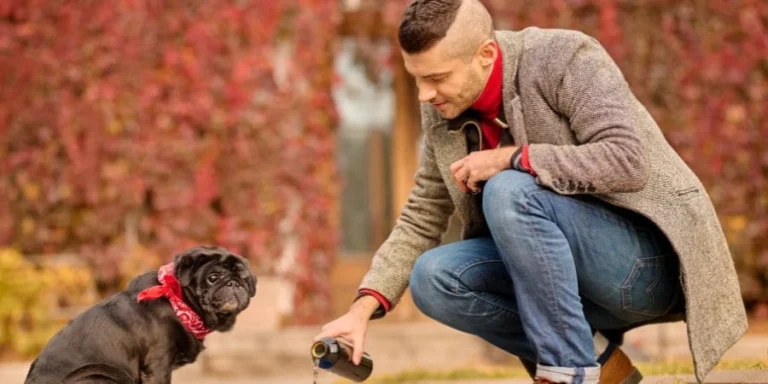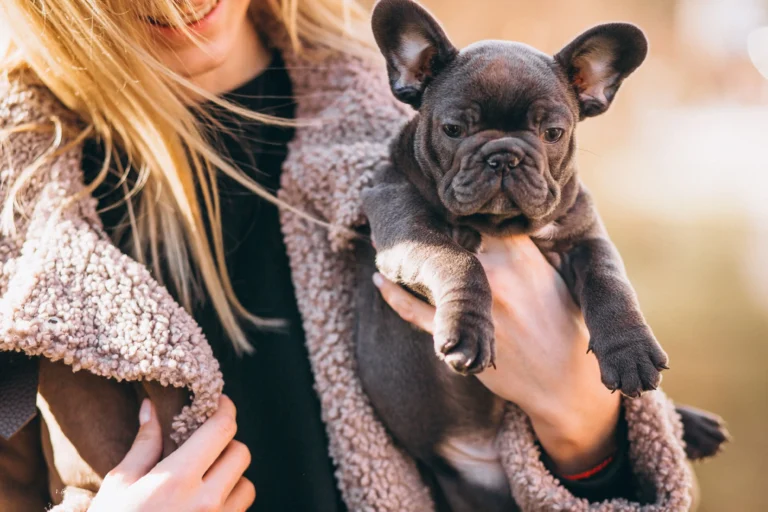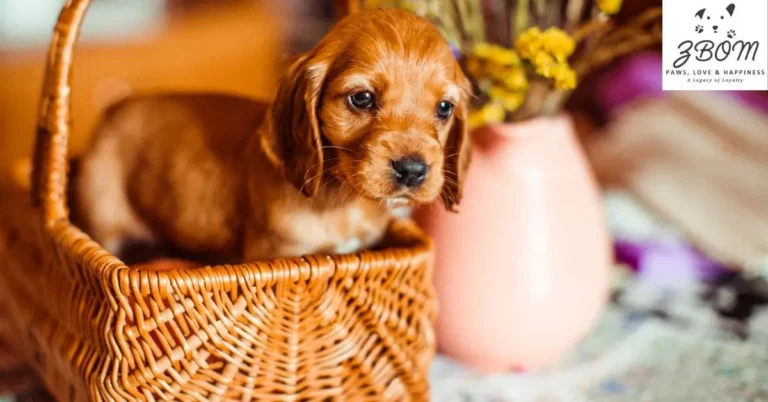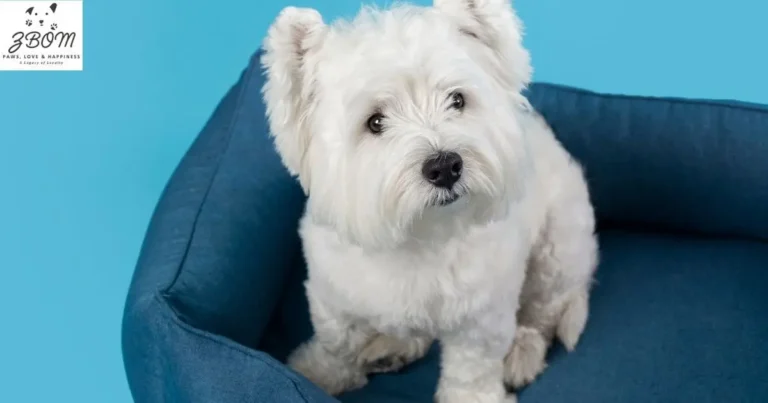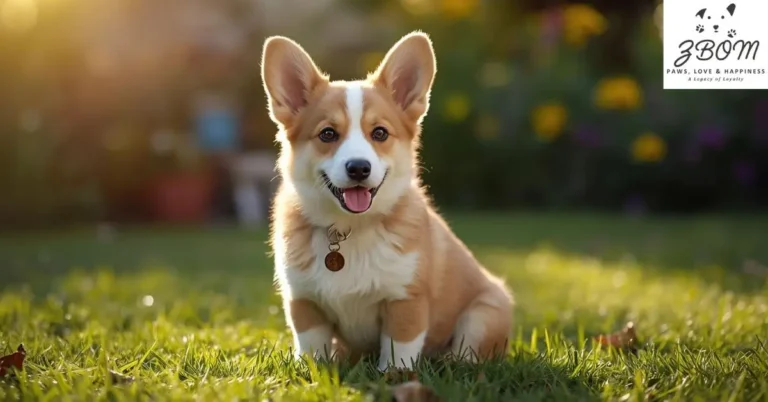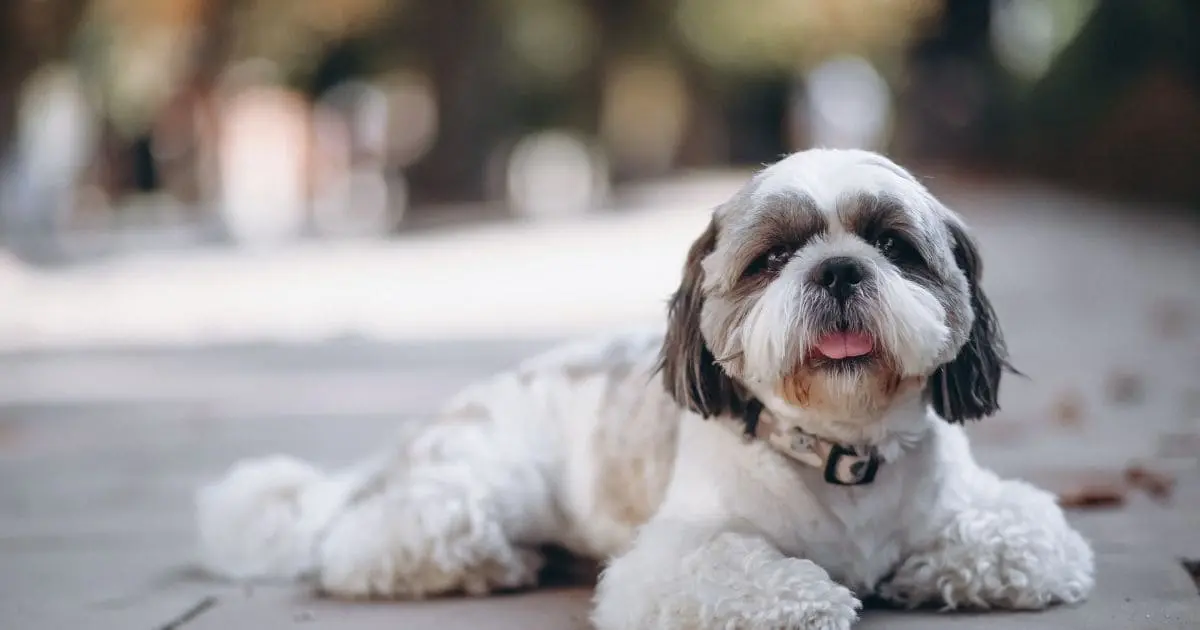
What are Fluffy Frenchies Mixed with
What are Fluffy Frenchies Mixed with If you’ve recently stumbled across photos of French Bulldogs with long, fluffy coats and found yourself doing a double-take, you’re not alone. These “fluffy Frenchies” have taken social media by storm, leaving people wondering whether they’re looking at a mixed breed, a new designer dog, or something else entirely.
The luxurious, what are Fluffy Frenchies Mixed with soft fur seems completely at odds with the sleek, short coat we’ve come to expect from traditional French Bulldogs, and it’s natural to assume these dogs must be crossed with another breed to achieve that look.
Here’s where things get interesting—and where a lot of misinformation starts floating around. The truth about fluffy Frenchies is more complex than a simple yes or no answer about whether they’re “mixed” dogs. Some are purebred French Bulldogs carrying a rare recessive gene, while others are indeed crosses with long-haired breeds. The problem is that distinguishing between them isn’t always straightforward, especially when breeders aren’t being completely honest about their dogs’ lineage.
The explosion in popularity of these fluffy-coated Frenchies has created a breeding frenzy, with some ethical breeders working carefully with genetics and others taking shortcuts that involve mixing breeds to achieve the desired look faster. This has left prospective buyers confused about what they’re actually getting—and whether that adorable fluffy puppy they’re considering is a purebred French Bulldog with a rare gene or a mixed breed being sold at purebred prices.
Also Read: How Old does a Dog have to be a Breed
Short Answer About What Does a Fluffy Frenchie Look Like?
What are Fluffy Frenchies Mixed with looks almost identical to a standard French Bulldog except for its noticeably longer, softer coat. The extra fluffiness is most visible around the chest, neck, and ears, giving them an adorable teddy bear appearance. Their fur is medium-length rather than truly long, so it won’t drag on the ground.
They maintain all the classic Frenchie features like bat ears, a compact muscular body, and a large square-shaped head. The fluffy coat simply adds an extra layer of cuteness to their already charming look.
What Does a Fluffy Frenchie Look Like?
When examining Fluffy Frenchies alongside other Bulldogs, you’ll notice that the breed appearance isn’t drastically different. The French Bulldog maintains the same iconic look as regular French Bulldog specimens, with the primary distinction being their fluffy hair. While standard Frenchies are recognized by the AKC breed standard for their short hair, the fluffy variety carries a natural gene that produces slightly longer fur, creating what many refer to as long-haired dogs.
It’s important to clarify a common misconception about these dog breeds. Though frequently called “long hair” varieties, their coat is more accurately described as a medium-length coat. The fur won’t sweep the floor like some long-haired dogs from other breeds. What are Fluffy Frenchies Mixed with instead, you’ll notice the extra fluffiness primarily around their fluffy chest, fluffy neck, and fluffy ears. This soft coat gives them an irresistibly cuddly appearance that makes them incredibly sought-after dogs among enthusiasts.
According to the AKC breed standard, what are Fluffy Frenchies Mixed with specimens with short hair are eligible to compete in conformation shows. This means that despite carrying the natural gene for longer fur, Fluffy Frenchies are not “officially” recognized for competition purposes, even though they occur naturally within the breed. Beyond their coat length, these adorable dogs share identical physical features with their short-haired counterparts.
Also Read: How to Choose the Best Whelping Box French Bulldogs
The body structure of Fluffy Frenchies aligns perfectly with the breed standards for all Frenchies. These sturdy dogs are heavily boned and remarkably compact dogs despite their solid build. While they may be smaller compared to many other dog breeds, they are far from delicate lap dogs. Their robust construction gives them a powerful appearance that contradicts their moderate size.
One of the most distinctive dog characteristics is the square-shaped head, which is relatively large in proportion to the body. The eyes are typically dark eyes, though lighter eyes are acceptable in dogs with lighter dog coloring. These facial features contribute significantly to the breed appearance that makes French Bulldog varieties so recognizable.
The signature bat ears are perhaps the most famous aspect of Frenchies. These erect ears stand straight up atop their head and are incredibly prominent ears that give the breed its distinctive alert expression. The bat ears are not just a cosmetic feature but a defining characteristic that sets Bulldogs of this type apart from other breeds.
Regarding tail variations, the breed standards allow for either a straight tail or screwed tail. However, a curly tail is not acceptable. What are Fluffy Frenchies Mixed with typically, Frenchies sport a short tail that is carried as a low tail close to the ground, adding to their compact silhouette.
When it comes to alterations, the only modification permitted is dewclaws removal. The dewclaw function is minimal in most dog breeds, as these claws don’t typically serve a practical purpose. Because dewclaws lack bone structure, they can easily catch on objects and tear, causing injury. For this safety reason, many veterinarians offer a vet recommendation for their removal, particularly in active breeds.
Also Read: How Long are French Bulldogs Pregnant
What are Fluffy Frenchies Mixed with apart as exceptionally adorable dogs is their combination of that irresistible soft coat and the wide variety of unique colors available. The fluffy texture adds an extra dimension to already stunning coat patterns, making these sought-after dogs even more desirable among French Bulldog enthusiasts. Their fluffy chest, fluffy neck, and fluffy ears create a teddy bear-like appearance that’s hard to resist.
Despite not being eligible to compete under current AKC breed standard guidelines due to their medium-length coat, Fluffy Frenchies possess all the beloved dog characteristics and physical features that make Frenchies such wonderful companions. What are Fluffy Frenchies Mixed with from their heavily boned and compact dogs build to their charming bat ears and square-shaped head, these sturdy dogs embody everything people love about the French Bulldog while offering that extra touch of fluffiness that makes them truly special among Bulldogs.
Whether you’re drawn to the traditional short hair variety or the fluffier version with long hair, both types of Frenchies share the same wonderful temperament and distinctive breed appearance. The natural gene responsible for the fluffy hair simply adds another beautiful variation to this already remarkable breed, proving that dog coloring and coat texture only enhance the appeal of these fantastic lap dogs.
Are Fluffy Frenchies Purebred?
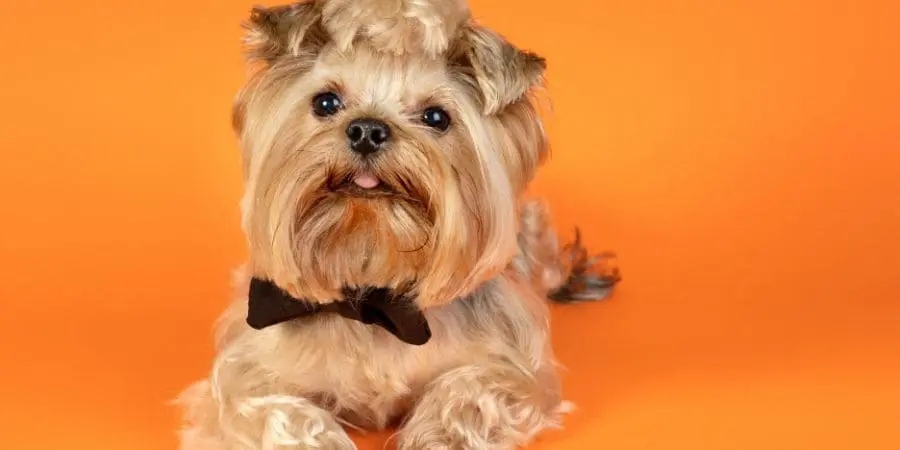
When it comes to fluffy Frenchies, there’s a common misconception that needs to be cleared up. Many people assume these adorable long-haired coat beauties are a mixed breed, but that’s far from the truth. Fluffy French bulldogs are actually purebred dogs with a fascinating genetic story behind their distinctive coats.
What Makes Fluffy Frenchies Special?
French bulldogs are traditionally known for their short coats, which is why seeing a long coat variation can be surprising. However, purebred French bulldogs can indeed carry the gene responsible for this fluffy appearance. This isn’t a result of mixing with other dog breeds, but rather a recessive gene that has always existed within the breed characteristics.
The Science Behind Coat Genetics
The key to understanding fluffy Frenchies lies in coat genetics. The long-haired trait is caused by a recessive gene that both parents must carry for a puppy to display the fluffy coat. This makes them a rare but completely natural variation within the breed, not a deviation from purebred dogs standards.
French Bulldog Variations
While standard French bulldogs sport the classic short coats, what are Fluffy Frenchies Mixed with variations like the fluffy type showcase the genetic diversity within the breed. Both dog coat types are authentic representations of the breed, though the fluffy version remains less common due to the recessive nature of the gene.
Also Read: How Many Puppies do French Bulldogs Have
Understanding Different Dog Coat Type
The difference between standard and fluffy French bulldogs highlights how coat genetics work in dog breeds. These distinctive coats don’t change the fact that fluffy Frenchies maintain all other breed characteristics of traditional French bulldogs – from their compact body structure to their affectionate personality.
Whether you prefer the traditional short coats or the luxurious long-haired coat of fluffy Frenchies, both are genuine purebred French bulldogs that deserve recognition and appreciation within the breed community.
Fluffy Frenchies are one of the most popular dog breeds, adding to the popularity of the French bulldog. While Frenchies aren’t associated with a long-haired coat, there are fluffy Frenchies that may make you wonder what they are mixed with to have such coats. However, the answer to this might surprise you.
In this article, we’ll answer what are fluffy Frenchies mixed with by going over the history of the breed. Read on to better understand how these dogs got their distinctive fluffy coats.
Are Fluffy Frenchies Purebred?
Contrary to what some might believe, fluffy Frenchies are purebred dogs. They aren’t mixed with another breed to have the long-haired coat. While this contradicts as French bulldogs only have short coats, there’s more to the discussion about how fluffy Frenchies got their long, distinctive coats.
Also Read: How to Determine Frenchie Stud Fee Effectively
How Do Fluffy Frenchies Get Their Long Coat?
The question of what are Fluffy Frenchies Mixed with developed their luxurious long coats remains a fascinating topic in breed history. While French bulldogs are traditionally recognized for their smooth, short fur, the emergence of the fluffy variety involves complex coat genetics and genetic inheritance patterns.
Understanding the Gene Behind Fluffy Frenchies
French bulldogs typically possess a short hair gene that is dominant gene in nature. However, fluffy Frenchies carry the long hair gene, which operates as a recessive gene. This genetic trait is crucial to understanding how these adorable pups get their distinctive fluffy appearance.
For offspring to inherit the fluffy coat, both parent dogs must carry this recessive gene. This is where selectively breeding comes into play – fluffy Frenchies are the result of intentionally pairing two dogs that both carry the long hair gene.
The Historical Origins and Breed Development
The origins of this recessive gene in French bulldogs are subject to debate within the breeding practices community. Some experts in breed development speculate that the gene traces back to bulldog ancestors from the breed’s early days. During this period of breed history, these ancestors may have been mixed with long-haired dogs, introducing the long hair gene into the purebred genetics pool.
What are Fluffy Frenchies Mixed with while this theory about bulldog ancestors being crossed with long-haired dogs is widely discussed, it remains highly debated among breed historians and genetics experts.
Genetic Inheritance in French Bulldogs
The science of genetic inheritance explains what are Fluffy Frenchies Mixed with are relatively rare. Since the long hair gene is a recessive gene and the short hair gene is a dominant gene, both parents must carry the fluffy gene for it to manifest in their offspring. This makes understanding genetic traits essential for breeders who specialize in selectively breeding these unique French bulldogs.
Caring for Your Fluffy Frenchie’s Coat
If your fluffy Frenchie carries the long hair gene, proper coat care becomes essential. Their beautiful long coats require more attention than the standard short-haired variety. Here’s what you need to know about coat maintenance:
Proper Grooming is Essential
Grooming your fluffy Frenchie regularly is crucial for maintaining their coat health. Dog grooming for long coats involves regular brushing to prevent matting and tangling. Proper grooming helps distribute natural oils throughout their fur, keeping it shiny and healthy.
Nutrition for Coat Health
Choosing the right dog food plays a significant role in maintaining a healthy coat. Quality dog nutrition supports coat health from the inside out. Look for dog food formulated specifically to promote coat maintenance and overall skin health.
Also Read: When Can Male Dogs Get females Pregnant
Complete Coat Care Routine
A comprehensive coat care routine for fluffy Frenchies should include:
- Regular dog grooming sessions
- High-quality dog nutrition with omega fatty acids
- Consistent coat maintenance practices
- Attention to coat health indicators
The Beauty of Breeding Practices
Modern breeding practices have allowed breeders to better understand purebred genetics and the genetic traits that define fluffy Frenchies. Through careful selectively breeding of parent dogs who both carry the recessive gene, What are Fluffy Frenchies Mixed with breeders can now more reliably produce these stunning long-haired dogs.
Understanding the genetic inheritance patterns, the role of bulldog ancestors, and the ongoing breed development helps us appreciate just how special fluffy Frenchies truly are. Whether their long hair gene originated from early long-haired dogs mixed into the lineage or through natural genetic traits, these dogs represent a beautiful variation within the French bulldogs breed.
By combining proper grooming, quality dog food, and regular coat maintenance, you can ensure your fluffy Frenchie maintains a beautiful, healthy coat that showcases their unique fluffy appearance for years to come.
Also Read: How Much are Fluffy French Bulldogs
How to Adopt a Purebred Fluffy Frenchie?
When it comes to fluffy Frenchies, potential owners need to understand that these are among the most rare dogs in the canine world, which naturally makes them expensive dogs. The combination of rarity and high price tags unfortunately attracts unscrupulous sellers, making it absolutely critical to find a responsible breeder before adopting dogs of this unique variety.
The reality of breeder scams in the French bulldog adoption market cannot be ignored. Too many people have lost thousands of dollars to fake breeders who either don’t deliver a puppy at all or provide dogs that aren’t the purebred dogs they promised. This is why dog verification should be your top priority when looking for a purebred Frenchie. Working with legitimate breeders protects you from financial loss and ensures you’re getting an authentic Frenchie that meets breed standards.
Breeder selection requires careful research and due diligence. A reputable breeder will always be transparent about their breeding tips and practices. They should willingly provide documentation proving the puppy’s lineage and health records. Legitimate breeers understand that purebred dogs come with verifiable ancestry, and they’ll have no problem showing you registration papers, health clearances, and genetic testing results that confirm your fluffy Frenchies are indeed purebred.
Scam prevention starts with knowing what to look for in a responsible breeder. Red flags include breeders who refuse to let you visit their facility, can’t provide proper documentation, offer prices that seem too good to be true for such rare dogs, or pressure you into making quick decisions. A reputable breeder will actually interview you to ensure their puppies go to good homes, which is a positive sign in the dog adoption process.
Also Read: How To Determine Black French Bulldog Cost
Your dog buying guide should include meeting the puppy’s parents if possible, seeing where the dogs are raised, and asking detailed questions about health guarantees and return policies. Breeder reputation can often be verified through reviews, references from previous buyers, and membership in recognized breeding organizations. When adopting dogs as expensive dogs like fluffy Frenchies, these purchasing tips become even more important because the financial stakes are higher.
The dog adoption journey for a purebred Frenchie should never be rushed. Take your time with breeder selection, verify credentials thoroughly, and don’t let excitement override common sense. What are Fluffy Frenchies Mixed with a responsible breeder will appreciate your caution and thoroughness. Remember that finding an authentic Frenchie through legitimate breeders means you’re not just avoiding breeder scams—you’re also ensuring you bring home a healthy, well-bred companion who will be part of your family for years to come.
By following these purchasing tips and prioritizing dog verification, you can confidently navigate the world of French bulldog adoption and find the perfect what are Fluffy Frenchies Mixed with from a reputable breeder who truly cares about the welfare of their purebred dogs.
The Fascinating History of Fluffy French Bulldogs

The fascinating story of the fluffy French Bulldog begins with understanding its complex genetic history that spans multiple countries and social classes. What are Fluffy Frenchies Mixed with At the core of this narrative lies the recessive LH gene, a naturally occurring gene that determines whether puppies will have the distinctive fluffy coat. Despite being a legitimate genetic trait, this gene was historically labeled as an undesirable trait by many within breeding programs who sought to maintain what they considered pure breeding standards.
During the early development of the breed, long-haired puppies born with this recessive LH gene were tragically viewed as defective puppies. The prejudice against this naturally occurring gene was so strong that some of these innocent animals became euthanized dogs, victims of breeders’ attempts to prevent gene spread within their lines. This dark chapter in breed history reflects a misunderstanding of genetics and an overly rigid interpretation of what constituted a proper French Bulldog.
The roots of the French Bulldog extend back to England, where their ancestors served a far different purpose than the companion animals we know today. What are Fluffy Frenchies Mixed with these early Bulldogs were bred for bull-baiting, a violent blood sport popular during the Victorian era. When such outlawed sports were banned in 1835, the Bulldogs popularity faced a significant challenge as the breed’s original function disappeared overnight.
Rather than fading into obscurity, these Bulldogs underwent a remarkable breed transformation. Forward-thinking breeders recognized potential in creating companion animals from these powerful dogs. Through selective companion dog breeding practices, the aggressive temperament associated with breed aggression and bull-baiting was gradually bred out. To achieve size reduction and create more manageable small dogs suitable for domestic life, breeders interbred terriers with the Bulldogs, combining desirable traits from both breeds.
This new, smaller version of the breed gained momentum during the 1850s and began appearing at dog shows in the 1860s, marking its emergence as a distinct type. The timing coincided perfectly with the massive social upheaval of the industrial revolution, which would play a crucial role in the breed development and geographic spread of these dogs.
The industrial revolution brought profound changes to traditional crafts and created thousands of displaced workers throughout England. Among these were lacers, highly skilled artisans specializing in lace making by hand. What are Fluffy Frenchies Mixed with as machines replaced human craftsmanship, many lacers found themselves obsolete. Some of these workers emigrated to Normandy France, seeking new opportunities and bringing their beloved popular dogs with them, including the Toy Bulldog.
This dog migration proved pivotal in the breed history. The Toy Bulldog quickly became one of the most popular dogs in French society. Recognizing this growing market, breeders in England began actively exporting these small dogs across the Channel, particularly those with perceived dog faults according to English breeding standards. Interestingly, dogs with erect ears were considered faulted dogs in England at this time, leading to their export to France where different aesthetic preferences prevailed.
By the 1860s, the smallest Bulldogs were predominantly found in France rather than England, representing a complete geographic shift for the breed. As these dogs were increasingly bred in France, they earned the French Bulldog name, despite their clear Britain development origins. The breed had evolved into something distinct from the standard Bulldogs that remained in England, creating a unique identity for these European dogs.
In France, the breed became synonymous with high fashion and sophistication. The upper class embraced these charming small dogs, with French women particularly fond of them. They became regular fixtures in the royal court, representing elegance and status during the Victorian era. These fashionable dogs symbolized wealth and refinement among the elite.
However, the French Bulldog wasn’t exclusively a breed of the wealthy. Their appeal extended across the middle class and lower class as well, making them truly democratic companion animals. What are Fluffy Frenchies Mixed with the smaller size made them practical and affordable for families of all economic backgrounds, demonstrating remarkable class appeal that transcended social barriers. This widespread popularity across all levels of French society ensured the breed’s continued breed development and survival.
Unfortunately, comprehensive breed records from this crucial period are notably absent. The lack of detailed documentation means the exact path of breed development from Toy Bulldog to modern French Bulldog remains somewhat mysterious. What historians and breeders believe is that additional terrier stock was introduced during this time to increase ear prevalence, specifically to enhance and standardize the distinctive erect ears that became a hallmark of the breed.
Throughout this entire journey—from bull-baiting dogs in England to fashionable dogs in Normandy France, from outlawed sports participants to beloved companion animals of the royal court, upper class, middle class, and lower class—the recessive LH gene persisted quietly in the breeding population. What was once treated as an undesirable trait that led to euthanized dogs and defective puppies being eliminated from breeding programs is now celebrated in the fluffy French Bulldog.
The evolution of attitudes toward this genetic trait reflects broader changes in understanding genetics and embracing diversity within breed development. Modern breeding programs have moved away from the harsh practices of the Victorian era, where preventing gene spread of the recessive LH gene sometimes meant destroying healthy long-haired puppies. Today’s breeders recognize that this naturally occurring gene represents legitimate variation rather than a defect.
The story of the industrial revolution and its impact on displaced workers like the lacers who practiced lace making before being replaced by machines adds a poignant human dimension to this breed history. These workers, moving from England to Normandy France with their Toy Bulldog companions, couldn’t have imagined they were participating in a breed transformation that would create one of the world’s most beloved companion animals.
The breeders in England who sent their small dogs with dog faults like erect ears to France inadvertently contributed to creating the unique French Bulldog name and identity. What was considered faulted dogs in Britain development became celebrated features when bred in France, demonstrating how breeding standards can vary dramatically between cultures and time periods.
The smallest Bulldogs, once viewed as inferior to their larger bull-baiting ancestors, found their true calling as companion dog breeding triumphs. Their journey from working dogs to high fashion status symbols to universally beloved popular dogs showcases the remarkable adaptability inherent in breed development. The influence of terrier stock through interbred terriers gave these dogs their distinctive personality and physical characteristics, including enhanced ear prevalence that became a defining feature.
Today’s fluffy French Bulldog represents the culmination of this rich genetic history. The recessive LH gene that produces long-haired puppies is no longer viewed as creating defective puppies or an undesirable trait requiring elimination through tragic means like euthanized dogs. Instead, it’s recognized as a beautiful expression of the naturally occurring gene variation that has always existed within the breed.
Understanding this breed history helps us appreciate how far we’ve come from the days of bull-baiting and outlawed sports in England, through the social upheaval of the industrial revolution that displaced lacers and other workers, to the dog migration that brought Toy Bulldog specimens to Normandy France.
The transformation from breed aggression to gentle companion animals, what are Fluffy Frenchies Mixed with from Victorian era rigidity about dog faults to modern appreciation of diversity, represents progress in both breeding practices and animal welfare.
The European dogs that emerged from this complex history, with their class appeal spanning from royal court to lower class homes, their smaller size making them accessible to French women and families of all backgrounds, what are Fluffy Frenchies Mixed with demonstrate that the best breed development embraces rather than eliminates natural variation.
The French Bulldog name now encompasses both standard and fluffy varieties, honoring the complete genetic history rather than the restricted breeding standards of the past.
From breeders in England sending faulted dogs with erect ears across the channel, to the breed transformation that occurred when bred in France, to the modern celebration of the recessive LH gene in breeding programs, the story of the fluffy French Bulldog is one of redemption and recognition. These fashionable dogs have proven that what one era considers defective puppies and works to prevent through gene spread control, another era celebrates as beautiful expressions of natural genetic trait variation inherent in these remarkable companion animals.
Health and Care
Maintaining optimal dog health for Frenchies requires dedicated attention to exercise and weight management. These dogs face significant health problems when what are Fluffy Frenchies Mixed with they become overweight dogs, and dog obesity can be particularly devastating given they aren’t the healthiest breed to begin with. Obesity severely impacts their overall health and wellbeing, making proper exercise and avoiding free-feeding absolutely essential for maintaining a healthy lifestyle.
Despite their compact size, many Frenchies are surprisingly active dogs who enjoy running dogs activities and playing dogs games. They can even excel in dog agility competitions and rally sports, showcasing their athletic dogs potential. Their strong food motivation makes dog training and teaching skills relatively easy, allowing owners to introduce various dog tricks while using treat training methods. Regular physical activity and canine exercise not only support dog fitness but also meet their exercise requirements for maintaining a healthy lifestyle.
However, what are Fluffy Frenchies Mixed with water hazards pose serious dangers. Their short legs, heavy bodies, and flat face create significant swimming difficulty and swimming challenges. The body structure makes keeping their nose above water nearly impossible, despite being water-loving dogs.
These water difficulties mean Frenchies are prone to jumping into pools without understanding the drowning risk they face. Pool safety demands strict dog supervision around pools safety areas, as unsupervised dogs may believe they’re strong swimmers when their actual swimming ability is severely limited by their dog swimming challenges and pool dangers.
Conclusion
Fluffy Frenchies are not mixed with any other breed despite what many people assume. They are purebred French Bulldogs who simply carry a recessive long-hair gene that both parents must pass down. This gene has existed naturally within the breed for generations, likely inherited from the breed’s early ancestors when
Bulldogs were crossed with terriers and other dogs during their development in the 1800s. So while their fluffy coat might make them look different, they are 100% French Bulldog with no recent mixing involved. Understanding this helps clear up the common misconception that fluffy Frenchies are designer dogs or crossbreeds.
FAQ
What dog makes a fluffy Frenchie?
French Bulldogs naturally have short hair and rough hair, but some carry the LH gene, giving them long hair and a fluffy hair look within the French Bulldog population.
What makes up a fluffy Frenchie?
Fluffys are frenchies with a recessive trait found in french bulldogs for over a hundred years. DNA testing helps identify genes in similar dogs to create long haired coats.
What do they breed Frenchies with to make them fluffy?
Fluffy French Bulldogs are pure French Bulldogs with a long-haired gene in the breed, a rare, recessive gene passed through generations, revealed by breeders using testing and selectively breeding to produce fluffy Frenchies once hidden.
Are fluffy Frenchies pure?
Fluffy Frenchies are adorable, purebred French Bulldogs with a unique genetic twist, making them one of the most sought-after variations of the breed.
How do I tell if my Frenchie is fluffy?
The Fluffy Frenchie is similar to a standard French Bulldog, with the main distinction being their hair, which is fluffier than average and especially noticeable around the ears.
